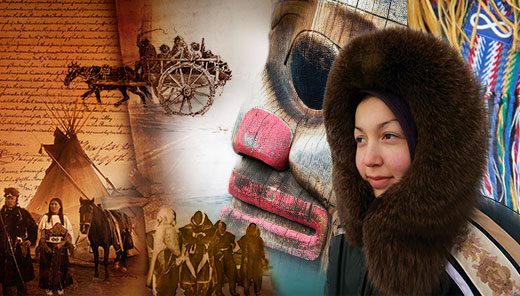June is National Indigenous History Month in Canada, and there are people who will immediately see that and frown. There are so many negative attitudes to the issue of the native people, not least a belief that “those Indians” get so much for nothing, when we “regular” people have to pay for it through our taxes.
These ideas are based almost entirely on ignorance, hearsay, and a lack of awareness of the truth concerning indigenous history. Canada has a reputation around the world as a caring and compassionate society, but the story of the First Nations of Canada is a black mark against us, and a shameful story that continues to this day.
I have always believed that bigotry and racism can be countered by knowledge, and there is a woeful lack of knowledge among Canadians concerning the history of the relations between indigenous communities and the “settler” society in this country. The exposure of the Residential Schools scandal has raised awareness for many, but the story is deeper and older than that.
Imagine a situation where the Government of Canada passed an act governing Jews, Muslims, Germans, Italians, or any other ethnic group. It would be seen, and rightly, as an unacceptably racist piece of legislation, especially if it denied those groups the right to vote, own property, confined them to certain restricted parcels of land, made them ask permission before they could leave their property, and refused to consult them on changes to that legislation.
This is the history of the Indian Act in Canada, legislation first passed in 1876, and still on the Statute Book, that contained all of those provisions, at one time or another.
The land we live on in Eastern Ontario was recognised by the British Crown in 1763 as Indian Territory, where no European was allowed to settle or even buy land. When the Loyalists arrived as penniless refugees after the American Revolution, it was the indigenous people, the Mississauga, who invited them to live in this area. They did not expect that this would mean they themselves would have to leave. No good deed goes unpunished, they say.
The many treaties, so-called, that resulted in traditional territories being taken for white settlement were, in almost every case, unfair, imposed on the original inhabitants, or contained promises and provisions that were unfulfilled.
In 1996, the Royal Commission on Aboriginal Peoples provided some shocking statistics about the status of indigenous people in Canada:
Aboriginal people endure ill health, run-down and overcrowded housing, polluted water, inadequate schools, poverty and family breakdown at rates found more often in developing countries than in Canada. These conditions are inherently unjust. They also imperil the future of Aboriginal communities and nations.
Regarding housing, the Report is scathing:
“Houses occupied by Aboriginal people are twice as likely to be in need of major repairs as those of other Canadians. On reserves, 13,400 homes need such repairs, and 6,000 need outright replacement. Aboriginal homes are generally smaller than those of other Canadians, but more people live in them. Aboriginal homes are 90 times more likely than those of other Canadians to be without piped water. On reserves, more than 10,000 homes have no indoor plumbing. About one reserve community in four has a substandard water or sewage system.
In the North, solid waste dumps and untreated sewage are contaminating earth, land, fish and animals.”
How would you like you and your family to live under those conditions? This is not a state indigenous people have chosen for themselves, no matter what some might claim. This month, the Times will publish some articles on the story behind this state of affairs, and try to shed some light on the history of indigenous people in an effort to give some context and understanding of this dreadful situation.









